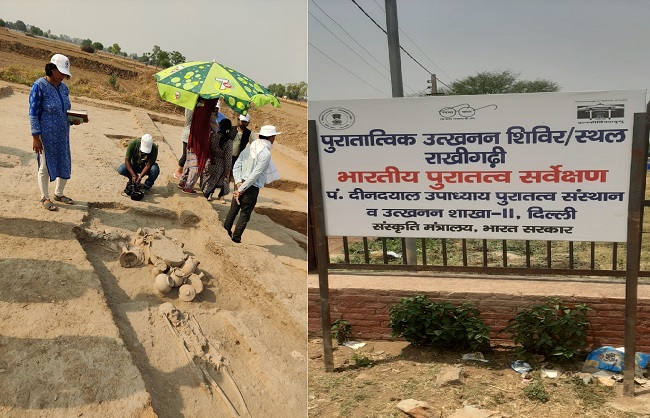Meerut, 6 July: Four years after the discovery of horse-driven copper-bronze age chariots in Sinauli village surprised archaeologists and historians alike, the process of acquiring 28 hectares of property surrounding the site has begun.
Additional District Magistrate (ADM) Amit Kumar stated, “Following consultation with the Archaeological Survey of India’s (ASI) Meerut circle, we met with farmers, who overwhelmingly consented to the surrender of their agricultural lands in Sinauli. The exact amount of compensation has yet to be determined, although it is expected to be approximately Rs 28 crore.”
Since the region was dug for the first time in 2005, the terrain, which is rich in archaeological artefacts, has been the source of numerous unexpected discoveries. It led to the discovery of a massive Harappan burial site dating back to roughly 2,000 BC.
Shri Ram Sharma, a farmer from Sinauli, stated, “This is an excellent idea, and we wholeheartedly support the cause. In reality, given the riches that were hidden, the acquisition of property was long overdue. Many farmers may lose their farms, but we were guaranteed of appropriate compensation during our discussions with civil administration.”
Meanwhile, Amit Rai Jain, a Baghpat native and member of the Culture and History Association, a group of historians in Uttar Pradesh, stated, “The development would help to remove the fog that has surrounded our ancient past. This will place Baghpat on the map worldwide.”
In 2018, ‘first-ever’ confirmation of chariots dating from 2,000 BC to 1,800 BC was discovered.
Jain has been pleading with the ASI to begin major activities at the site since the first excavation in 2005. In 2014, he uncovered a human skull with a copper crown studded with Carnelian beads in an old brick kiln in Baghpat’s Chandayan village as an amateur archaeologist.
ASI (Meerut circle) superintendent archaeologist Brajsundar Gadnayak stated, “Sinauli is a vital location. For the first time in India, we discovered a bronze-age chariot in a burial cemetery. We had just finished a ground-penetrating radar (GPR) scan , which indicated that there were numerous intriguing artefacts buried in the area. The site is actually a large burial cemetery, which tells us a lot about the historic civilization that formerly existed here.”
ASI discovered the “first-ever” tangible evidence of chariots dating from 2,000 BC to 1,800 BC during a trial excavation in Sinauli village in June 2018. The discovery, which was decorated with copper designs, opened up new avenues of investigation into the area’s civilisation and culture.
In a three-month excavation that began in April 2018, eight burial sites were discovered. Among the artefacts unearthed were daggers, combs, and antenna swords.





